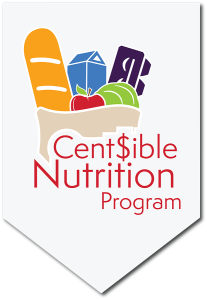Potatoes, carrots, beets, onions- these root vegetables and others thrive in most Wyoming gardens. Root vegetables are cold-season plants. They will survive as long as temperatures stay above 25°F. While cool temperatures may cause the leafy parts of the plants may die back, the root itself will be fine. In fact, cool weather may even increase the flavor of these vegetables.
Most root vegetables can be planted 1-2 weeks before the last frost in the spring and harvested in later fall.
Potatoes:
- Gently brush off most of the soil after harvesting. Remove any diseased or damaged potatoes.
- Spread them out to cure for about 10 days in a shady, airy space, at 50-55°F.
- After curing, place them in a dark, unheated room, cellar, or refrigerator that is kept as close to 40°F as possible, is fairly humid, and has air circulation.
- Keep potatoes away from light.
Carrots, Turnips, Rutabagas, and Beets:
- Trim off all but ½ inch of the tops and brush off excess soil after harvesting.
- Remove any diseased or damaged vegetables.
- Store between 32-40°F.
Onions:
- Harvest onions when two-thirds of the tops have fallen over. Carefully dig bulbs out of the dirt and brush off extra dirt.
- Spread them out to cure for several days in a shady, dry place.
- Put cured onions in mesh bags, spread them on wire screens, or hang them in bunches at (32-40°F).
A note on storing root vegetables
Root vegetables last longest when stored between 32-40°F after harvest. They do not have to be refrigerated if an unheated cellar is available. To keep root vegetables from drying and shriveling, store them in burlap or in plastic bags with holes punched in them to help with air circulation.
Happy gardening and harvesting!
Information summarized from UW Extension publications by Katie Shockley, Writer/Editor, University of Wyoming Extension Communications & Technology.
Potatoes, carrots, beets, onions- these root vegetables and others thrive in most Wyoming gardens. Root vegetables are cold-season plants. They will survive as long as temperatures stay above 25°F. While cool temperatures may cause the leafy parts of the plants may die back, the root itself will be fine. In fact, cool weather may even increase the flavor of these vegetables.
Most root vegetables can be planted 1-2 weeks before the last frost in the spring and harvested in later fall.
Potatoes:
- Gently brush off most of the soil after harvesting. Remove any diseased or damaged potatoes.
- Spread them out to cure for about 10 days in a shady, airy space, at 50-55°F.
- After curing, place them in a dark, unheated room, cellar, or refrigerator that is kept as close to 40°F as possible, is fairly humid, and has air circulation.
- Keep potatoes away from light.
Carrots, Turnips, Rutabagas, and Beets:
- Trim off all but ½ inch of the tops and brush off excess soil after harvesting.
- Remove any diseased or damaged vegetables.
- Store between 32-40°F.
Onions:
- Harvest onions when two-thirds of the tops have fallen over. Carefully dig bulbs out of the dirt and brush off extra dirt.
- Spread them out to cure for several days in a shady, dry place.
- Put cured onions in mesh bags, spread them on wire screens, or hang them in bunches at (32-40°F).
A note on storing root vegetables
Root vegetables last longest when stored between 32-40°F after harvest. They do not have to be refrigerated if an unheated cellar is available. To keep root vegetables from drying and shriveling, store them in burlap or in plastic bags with holes punched in them to help with air circulation.
Happy gardening!
Information summarized from UW Extension publications by Katie Shockley, Writer/Editor, University of Wyoming Extension Communications & Technology.
Additional Resources
Learn more about root vegetables with these resources from the University of Wyoming Extension:
- UWE Publication: Gardening: Vegetables in Wyoming
- UWE Video: Storing Vegetables
Next up: Preparing Your Garden for Winter [Coming September 25]


